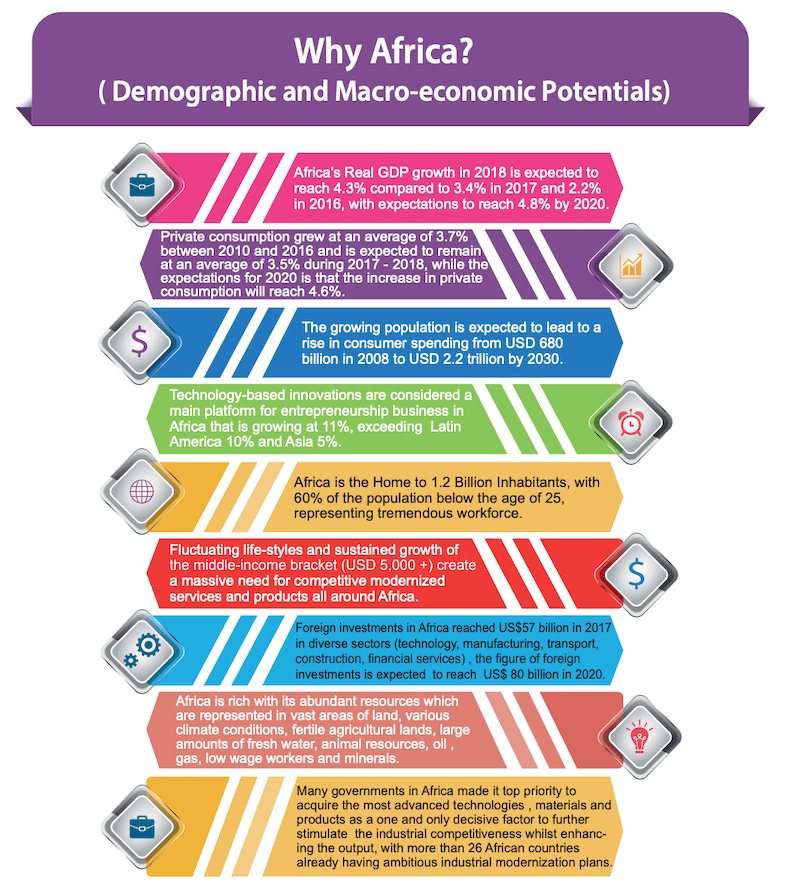Africa’s Textile Industry
• Globally, the fashion industry is expected to double in the next 10 years, generating up to US$ 5 trillion annually.
• Fashion is big business in Africa. The combined apparel and footwear market in sub-Saharan Africa is estimated to be worth US$ 31 billion, according to data from Euro monitor International.
• Africa is certainly on its way to becoming the major regional apparel hub with great propensity to provide competitive prices. The African textile and apparel fertile market keep engendering attention among international brands looking for new industrial destinations.
• Textile products manufactured in many African countries qualify for both US and European market standards under several trade agreements as duty free products, with no quota restrictions.
Why Africa?
africa’s real GDP growth in 2018 is expected to reach 4.3% compared to 3,4% in 2017 and 2.2% in 2016, with expectation to reach 5.1 in 2020.
private consumption grew at an average of 3,7% between 2010 and 2016 and is expected to remain at an average of 4.6 % until 2020.
the growing population is expected to lead to a rise in consumer spending from 680 USD billion in 2009 to 2.2 trillion USD bu 2030.
Technology-based innovations are considered the main platform for entrepreneurship business in Africa that is growing ar 11% exceeding Latin America 10% and Asia 5%.
Africa is the home to 1.2 billion inhabitants, with 60% of the population below the age of 25 representing tremendous workforce
Fluctuating lifestyle and sustained growth of the middle-income bracket (+5000 USD) create a massive need for competitive modernized services and products all around Africa
Foreign investment in Africa reached 57 billion USD in 2017 in reverse sectors and in 2020 this number will be 80 billion use
Africa is rich with its abundant resources which are represented in vast areas of land, various climate conditions fertile agriculture lands a large amount of fresh water, animal resources. Oil, gas, low wage workers and minerals
Many governments in \africa made it top priority to acquire the most advanced technologies, materials and products as a one and only decisive factor to further stimulate the industrial competitiveness whilst enhancing the output, with more than 26 African countries already having ambitious industrial modernization plans.
Join Us Now
Join 80.000 Middle East and North Africa Textile Professionals who get Kohan Textile Journal’s FREE Newsletter…




















